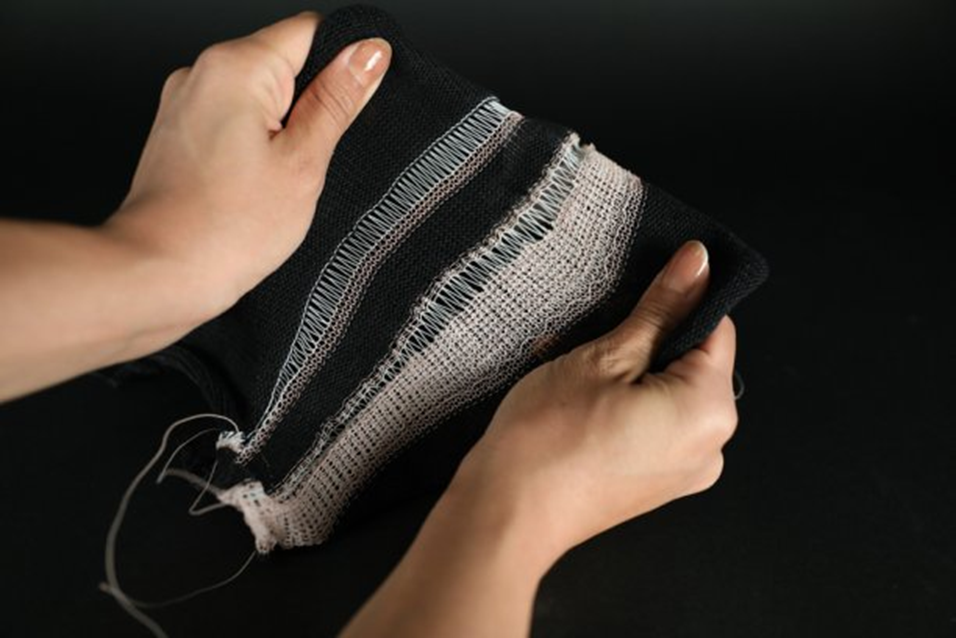
A Cost-Effective Temperature Activated Shape Changing Fabric Made From Elastomeric Liquid Crystal Fibers – A Remarkable Invention By MIT Researchers.
Radhakrishnaiah Parachuru (Principal Research Scientist-Emeritus), MSE, Georgia Institute of Technology, Atlanta, Georgia.
Fibreobo is a new fiber developed at MIT that contracts in response to an increase in temperature and self-reverses once the temperature decreases, without any embedded sensors or other hard components. The low-cost fiber is fully compatible with textile manufacturing techniques, including weaving, knitting and embroidery and can be produced continuously. As such it could enable designers to easily incorporate actuation and sensing capabilities into a wide range of fabrics for numerous applications.
These fibers could also be combined with conductive threads, acting as a heating element, providing the user with digital control over a textile’s form. A fabric could change shape based on any piece of digital information, such as readings from a heart rate sensor.
“So much of our environment is adaptive and responsive, but textiles are completely inert,” says Jack Forman, a graduate student in the Tangible Media Group of the MIT Media Lab. He was joined in the development by 11 other researchers at MIT and Northeastern University, including his advisors, Professor Neil Gershenfeld, who leads the Center for Bits and Atoms, and Hiroshi Ishii, Professor of Media Arts and Sciences and director of the Tangible Media Group.
Morphing materials
The MIT researchers wanted a fiber that could actuate silently and change its shape dramatically, while being compatible with common textile manufacturing procedures. To achieve this, they used a liquid crystal elastomer (LCE). A liquid crystal is a series of molecules that can flow like liquid, but when they’re allowed to settle, stack into a periodic crystal arrangement. The crystal structures are incorporated into an elastomer network. As the LCE material heats up, the crystal molecules fall out of alignment and pull the elastomer network together, causing the fiber to contract. When the heat is removed, the molecules return to their original alignment, and the material to its original length.
By carefully mixing chemicals to synthesize the LCE, the researchers were able to control the final properties of the fiber, such as its thickness or the temperature at which it actuates. The researchers discovered, however, that making fiber from LCE resin is tricky, and existing techniques often result in a fused mass that is impossible to unspool.
Fiber fabrication
Forman built a machine using 3D-printed and laser-cut parts and basic electronics to overcome the fabrication challenges. With this, the thick and viscous LCE resin is heated and then slowly squeezed through a nozzle. As the resin comes out, it is cured carefully using multiple UV lights that shine on both sides of the fiber as it extruded.
It was observed that if the light is too dim, the material will separate and drip out of the machine. If it is too bright, the material formed clumps, which yielded bumpy fibers.